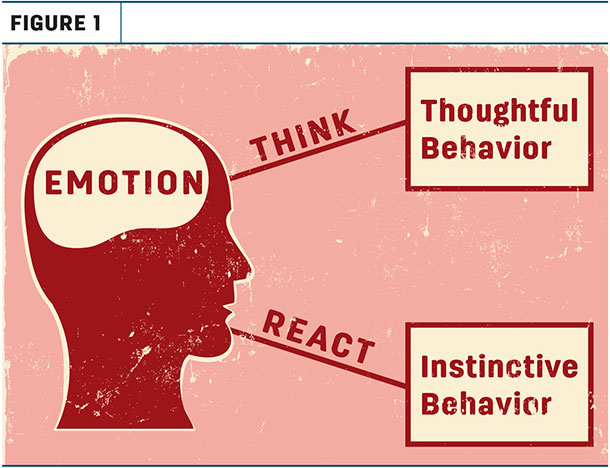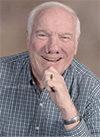Our habits are important in establishing how we behave and how others perceive us. I worked with a supervisor who was habitually discrediting employees with negative body language and derogatory comments.
It took great effort, but he established new habits with appropriate body language and positive verbal comments that provide encouragement to employees. How does this happen?
A habit is a way of acting that is regularly followed until it becomes almost involuntary. We no longer think before taking action. Good habit examples include looking both ways before crossing a street or ducking when an object is about to hit us.
We also often have developed bad habits like reacting defensively or angrily to negative comments.
The purpose of this article is to help you recognize that damaging habits can be changed. I will also share a personal example. We begin by understanding the role of emotion and behavior.
It is crucial to understand the difference between emotions and behaviors. Behaviors are the actions that result from those emotions. Emotions are natural, human reactions to situations. Emotions are normal and very personal.
Suppressing an emotion or feeling guilty about having an emotion only increases stress. The effect and impact of the emotion is primarily on the person having the emotion – it is internal.
Our behavior in response to the emotion is very different. The effect of the resulting behavior is primarily external. The impact is primarily on others. Since the impacts are external, other individuals are impacted by our behavior resulting from the emotion being experienced.
Examples of the difference between emotion and behavior or action are:
-
An employee is late for work. The resulting emotion is frustration or anger. The action could be to criticize the employee in front of all of the employees (instinctive) or meet privately with the employee and provide appropriate redirection or negative feedback.
-
Low milk prices. The emotion is frustration and discouragement. The action is to constantly complain that the farm might have to go out of business (even though that is not a likely outcome). The result is that a valuable key employee left.
- Uncooperative animals. The emotions can be frustration and even anger. Actions could be to hit the animal (instinctive) or walk away to cool off (thoughtful).
In each of these examples, the emotional reaction is natural and largely beyond the person’s control; the resulting behavior, on the other hand, is controllable.
When we react to our emotions without thinking about how those around us perceive our behavior, we are engaging in instinctive behavior. We then ignore our decision opportunity and express or act instinctively based solely on our emotions (Figure 1).

The alternative is to think before we act (thoughtful behavior). Now we are seizing a decision opportunity. We can proactively consider the best behaviors. With thoughtful behavior, we are “putting our best foot forward” to those around us.
Let’s come back to habits. Habits are actions or behaviors that become more involuntary the more we exhibit them. Our instinctive behaviors are driven by who we are – our personality, our tendencies, our styles. Some of our instinctive behaviors serve us well; others do not.
To some degree, we all struggle every day with our instinctive behaviors. Often these undesirable behaviors have become habits. Examples that are problems for supervisors and leaders include failure to use active listening, procrastinating providing feedback and reprimanding an employee when the failure was not his or her fault.
To overcome the undesirable instinctive behavior, especially if it has become a habit, is not easy but is doable. The bad news is: Changing to a thoughtful behavior may be very difficult. The good news is: The change becomes easier over time as the thoughtful behavior becomes the new habit.
Before discussing ideas to start a thoughtful behavior, I’ll share a personal example.
Today, most people who observe my behavior perceive that I am pretty assertive. I am a very loud, excitable speaker. I am very participative in group discussions. It is my thoughtful behavior that is being observed.
By nature, however, I am a pretty passive person prone to accommodating and avoiding. My instinctive behavior is to accommodate and avoid discussions, issues and situations.
Obviously, those instinctive behaviors would not have been very effective in my previous role as a professor or my current role as a consultant. At first, overcoming my instinctive, passive response was very difficult. Over time, it has become much easier. My more assertive, thoughtful behaviors have become habits.
Sometimes when I have presented the comments in the above paragraph, colleagues have said I must be wrong. Based on my behavior, there is no way I could be accommodating and avoiding.
I know, however, that accommodating and avoiding comes very easy for me – my instinctive behaviors. I constantly have to focus on using thoughtful, more assertive responses.
Changing an undesirable instinctive behavior to a thoughtful habit is challenging. It starts with the recognition that we have an instinctive behavior that needs to be changed.
Once identified, you need two things. The first is a plan. What will be the thoughtful behavior that will replace the instinctive behavior? If the instinctive behavior is to let your mind wander when others are talking, what do you want your thoughtful behavior to be?
A strategy may be to focus on looking in their eyes or making mental notes of the ideas and emotions he or she is sharing. Now practice.
The second thing you will likely need is some help. Who can serve as your encourager, reminder and consistency checker? It will take time for the thoughtful behavior to become a habit. That the thoughtful behavior will eventually become a habit is good news and the pot of gold at the end of the rainbow.
An action idea: Select an undesirable instinctive behavior that you need to replace with a thoughtful behavior habit. Now work on it. ![]()
ILLUSTRATION: Illustration by Kristen Phillips.

-
Bob Milligan
- Senior Consultant
- Dairy Strategies LLC
- Email Bob Milligan






